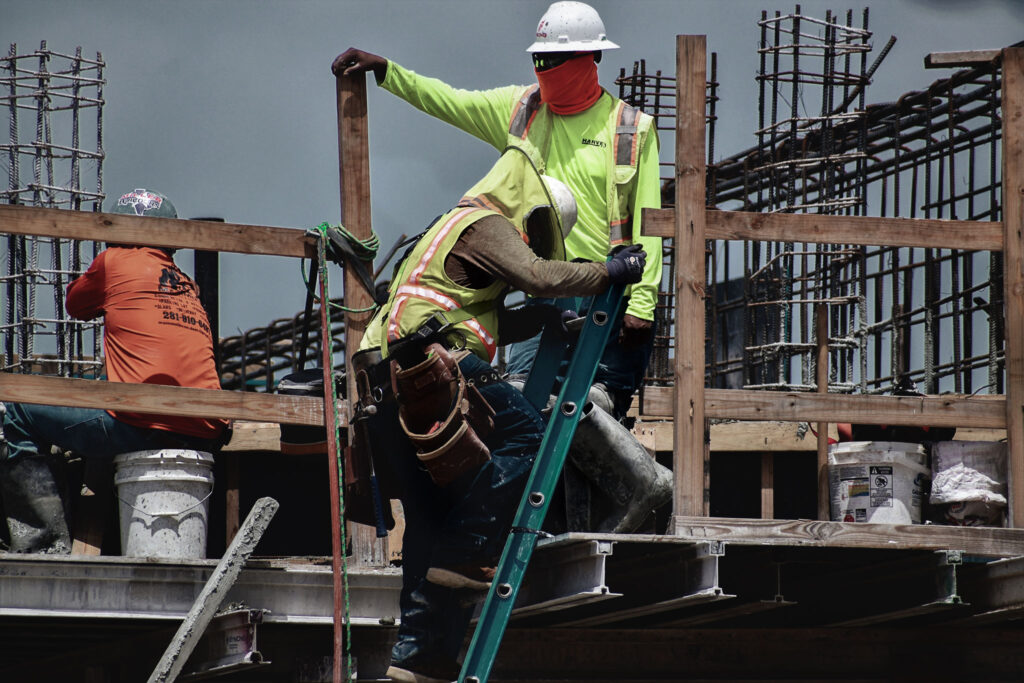Navigating the maze of regulations, code, and standards is a challenging, yet crucial, aspect of any construction project. Understanding these challenges is essential for success. So, let’s delve into the complex world of regulatory compliance in the construction industry.
Free eBook: Unveiling the Path to Digital Transformation in Construction
The importance of regulatory compliance in construction
Regulatory compliance is more than just a box to tick—it’s the cornerstone of operational success. Whether you’re a construction project manager, contractor, or other industry professional, understanding and adhering to regulations is paramount to protect against legal implications and safety issues.
While failing to comply with construction regulations can result in costly fines, there is more at risk; it also opens up your projects to legal pitfalls. Non-compliance can result in extensive litigation, project delays, and reputational damage.
In addition, safety is a non-negotiable commitment in our industry. Regulatory compliance is a linchpin for fostering a secure working environment, and adhering to safety standards is about protecting your workers from harm and your organisation from liabilities.
Types of regulations in construction
The construction industry operates within a tapestry of regulations, reflecting the diverse aspects required for project success. The professionals must navigate various compliance requirements, including:
- Building codes that outline the minimum standards for a project’s design, materials, and occupancy. Ensuring compliance is important to guarantee safety but isn’t always easy because codes vary regionally and span everything from structural design to accessibility standards.
- Safety standards which prioritise the well-being of workers and mitigate on-site risks. These regulations change with best practices, covering diverse areas like fall protection, hazard communication, and electrical safety.
- Environmental regulations that address the impact of construction activities on air quality, ecosystems, water resources, etc. Whether you’re talking about energy efficiency standards, waste disposal protocols, or anything in between, compliance requires a nuanced approach and adherence to ever-changing laws.
More to read: Your Building Control and Environmental Inspections Ensure Project Compliance and Energy Performance
Challenges in meeting regulatory requirements
You’ll likely encounter a myriad of challenges when trying to meet regulatory compliance. These obstacles come from the dynamic nature of regulations and the inherent complexity of diverse standards, often leading to conflicts. Understanding the following challenges is key to creating effective strategies for navigating the regulatory landscape:
- Changing regulations. Regulatory frameworks undergo frequent updates and revisions, making it challenging for construction professionals to keep up. These changes can lead to delays and inadvertent violations without proactive monitoring.
- The complexity of standards. Our industry is one that operates under a multitude of complex standards. This complexity introduces risks like oversight and misinterpretation that lead to non-compliance.
- Conflicts between standards. Different regulations can have conflicting requirements, creating a balancing act. These conflicts can lead to decision-making dilemmas, project delays, and the need for intricate compromises.
- Resource constraints. Adequate resources are crucial for compliance efforts. Constraints often result in sub-optimal compliance, increasing the likelihood of oversights and regulatory breaches.
- Communication and training. Finally, ensuring that all workers are well informed and trained on evolving regulations is an industry-wide challenge. Poor communication and training leads to errors, non-compliance, and compromised safety.

Strategies for effective regulatory compliance
Maintaining regulatory compliance in the construction industry demands a strategic, proactive approach.
- Stay informed by regularly monitoring updates and changes relevant to the industry, attend workshops, and engage with regulatory authorities.
- Implement comprehensive training programs to ensure workers have a deep understanding of diverse compliance requirements.
- Utilise construction software to integrate compliance measures into your workflows and leverage technology for real-time tracking of your compliance status.
- Establish a centralised repository for compliance-related documentation using a cloud-based platform for easy access, collaboration, and version control of important documents.
- Conduct regular risk assessments to identify potential compliance challenges and develop proactive strategies to address those risks.
- Implement regular audit schedules to assess compliance levels and perform inspections to identify and rectify any deviations from regulatory requirements.
- Integrate reporting tools and dashboards that offer real-time visibility to make quick decisions with up-to-date information, minimising the risk of oversights.
You might also like: Driving construction productivity with mobile construction apps
Regulatory compliance tools and solutions
Taking advantage of technology is the most reliable way to streamline processes, enhance efficiency, and ensure regulatory compliance in all of your projects. LB Aproplan is a leading tool that construction companies worldwide use to revolutionise their compliance tracking and reporting.
- Get seamless compliance through automation. With LB Aproplan, you can automate your compliance tracking to reduce manual burden and human error. We help ensure uniformity and precision in compliance efforts through standardised QHSE processes.
- Stay within regulations with mobile site inspections. Take construction compliance to the field with mobile capabilities to conduct inspections on the go and address issues as they arise to minimise risks and delays.
- Access construction checklists designed for precision. Meet specific compliance requirements with customisable checklists that ensure you don’t overlook any compliance aspect in your approach to regulatory adherence.
Ready to revolutionise your approach to regulatory compliance in construction? Book your personalised demo of LB Aproplan today— experience how we can help you stay compliant with standardised QHSE processes that leave clear audit trails, tools for handling snags on site, better data access and security, and more.




